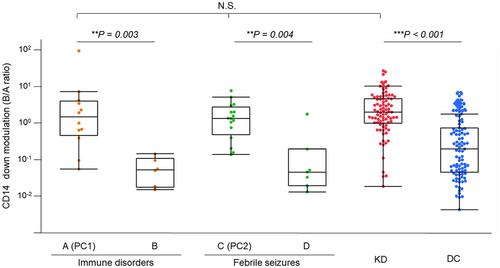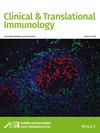The objectives of this study were to investigate the pathophysiology of Kawasaki disease (KD) from immunological and oxidative stress perspectives, and to identify real-time biomarkers linked to innate immunity and oxidative stress in KD.
We prospectively enrolled 85 patients with KD and 135 patients with diverse conditions including immune, infectious and non-infectious diseases for this investigation. Flow cytometry was used to analyse the surface expression of CD14, CD38 and CD62L on monocytes, along with a quantitative assessment of CD14 down-modulation. Additionally, oxidative stress levels were evaluated using derivatives of reactive oxygen metabolites (d-ROMs) and antioxidant capacity measured by a free radical elective evaluator system.
During the acute phase of KD, we observed a prominent CD14 down-modulation on monocytes, reflecting the indirect detection of circulating innate immune molecular patterns. Moreover, patients with KD showed a significantly higher CD14 down-modulation compared with infectious and non-infectious disease controls. Notably, the surface expression of CD14 on monocytes was restored concurrently with responses to intravenous immunoglobulin and infliximab treatment in KD. Furthermore, d-ROM levels in patients with KD were significantly elevated compared with patients with infectious and non-infectious diseases. Following intravenous immunoglobulin treatment, oxidative stress levels decreased in patients with KD.
Monitoring CD14 down-modulation on monocytes in real-time is a valuable strategy for assessing treatment response, distinguishing KD relapse from concomitant infections and selecting second-line therapy after IVIG treatment in KD patients. The interplay between inflammation and oxidative stress likely plays a crucial role in the development of KD.




